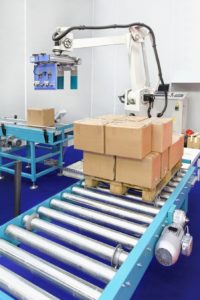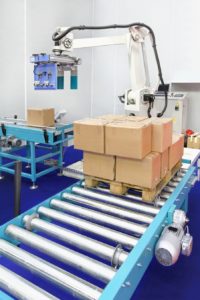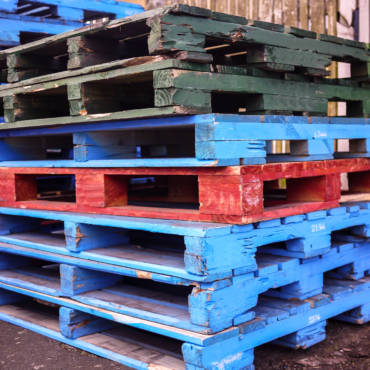 A common issue when companies look to improve or upgrade material handling equipment in their operation is that consideration into the type of pallet that will be utilized with this equipment is often overlooked. This can lead to very disappointing results in the overall efficiency, return on investment, and success of the intended upgrade. When looking to purchase new conveyor systems, electric pump trucks, palletizing and stacking equipment one must look to their pallet supplier to review equipment measurements and tolerances so they can ensure the pallets being provided will work with the new equipment once installed.
A common issue when companies look to improve or upgrade material handling equipment in their operation is that consideration into the type of pallet that will be utilized with this equipment is often overlooked. This can lead to very disappointing results in the overall efficiency, return on investment, and success of the intended upgrade. When looking to purchase new conveyor systems, electric pump trucks, palletizing and stacking equipment one must look to their pallet supplier to review equipment measurements and tolerances so they can ensure the pallets being provided will work with the new equipment once installed.
This is especially true when it comes to companies that purchase recycled pallets as there can be allot of variations in pallet heights, pallet design, and allowable defects. Some common issues that have been encountered are electric pallet trucks which have forks that are too tall or wide to fit into standard used pallets, conveyor systems with roller spacing that does not accommodate bottom board configuration of pallet, and palletizing equipment that does not have ability to tolerate variations in pallet heights. If not looked at closely prior to purchasing upgraded equipment you may be forced to upgrade your ongoing pallet supply which can result in increased costs that may easily outweigh the benefits of the new equipment.
As companies look to continuously cut costs lumber dimensions on pallets being manufactured get thinner creating much more variability in pallet heights, strength, and durability. This combined with the fact that material handling technology is getting faster and more precise can create a real issue for continued use of lower grade used pallets. As a company looks to invest in large scale and expensive automation projects these potential pallet specification upgrades must be factored into the overall project cost. By involving an experienced pallet supplier that has dealt with these types of systems in the design phase will help to limit unexpected costs after implementation.





